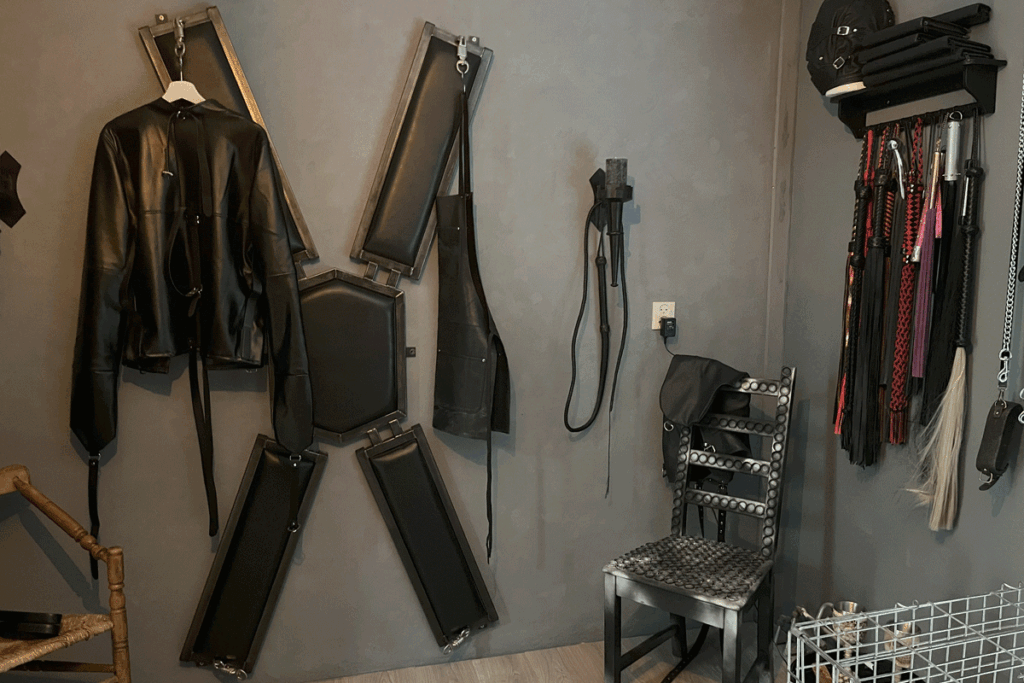Andrew’s cross St.
Definition
A St. Andrew’s cross is an X-shaped cross used in BDSM as bondage furniture. The sub is tied standing or slightly reclining with their arms and legs spread, usually at the four ends of the cross. The St. Andrew’s cross is mainly used for bondage, spanking, flogging, surrender, and various forms of sensation play. It is named after Saint Andrew, who, according to legend, was crucified on an X-shaped cross.

Explanation of the St. Andrew’s Cross
The St. Andrew’s Cross is a classic and popular piece of BDSM furniture. Its spreader shape forces the body into a position of complete openness and surrender. Arms and legs are bound upward and outward, which increases both physical exposure and psychological vulnerability.
This position is ideal for spanking sessions, nipple play, whipping, teasing, mental trials, or even medical play.
A St. Andrew’s Cross can be used in different ways:
- Standing against the wall (most stable and accessible)
- Free-standing in the room (for 360° access to the body)
- Slightly inclined (more comfortable for long sessions)
For many subs, being tied to a St. Andrew’s cross is a ritual of surrender. They are literally open, which makes this position ideal for dominance and power dynamics. The Dominant determines the pace, the actions, and when the sub is released.
The power of the St. Andrew’s cross lies not only in physical fixation, but also in its symbolism: crucified, surrendered, exposed. For some subs, it feels like total surrender without room to move, a state of pure submission.
Safety & points of attention
As with all forms of bondage, safety is essential, including (or especially) when using a St. Andrew’s cross.
Pay attention to blood circulation
Arms tied above the head for long periods of time can restrict blood circulation. Never leave a sub standing (tied) for too long, and alternate positions during long sessions.
Always supervise
Never leave a sub tied to a cross alone, especially if he/she enters subspace or can bend their knees.
Always use panic hooks or quick-release fasteners
In case of an emergency – such as fainting, cramps, panic, or sudden medical complaints – you must be able to release someone quickly. Therefore, never use knots or metal carabiners without quick release. Panic hooks (snap hooks or panic snaps) are specially designed for these types of situations and should be a standard part of your bondage equipment.
Test in advance how quickly you can open the fastenings, even with shaky hands or under time pressure. Safety is not a luxury, but a necessity.
Related terms St. Andrew’s cross
More information

